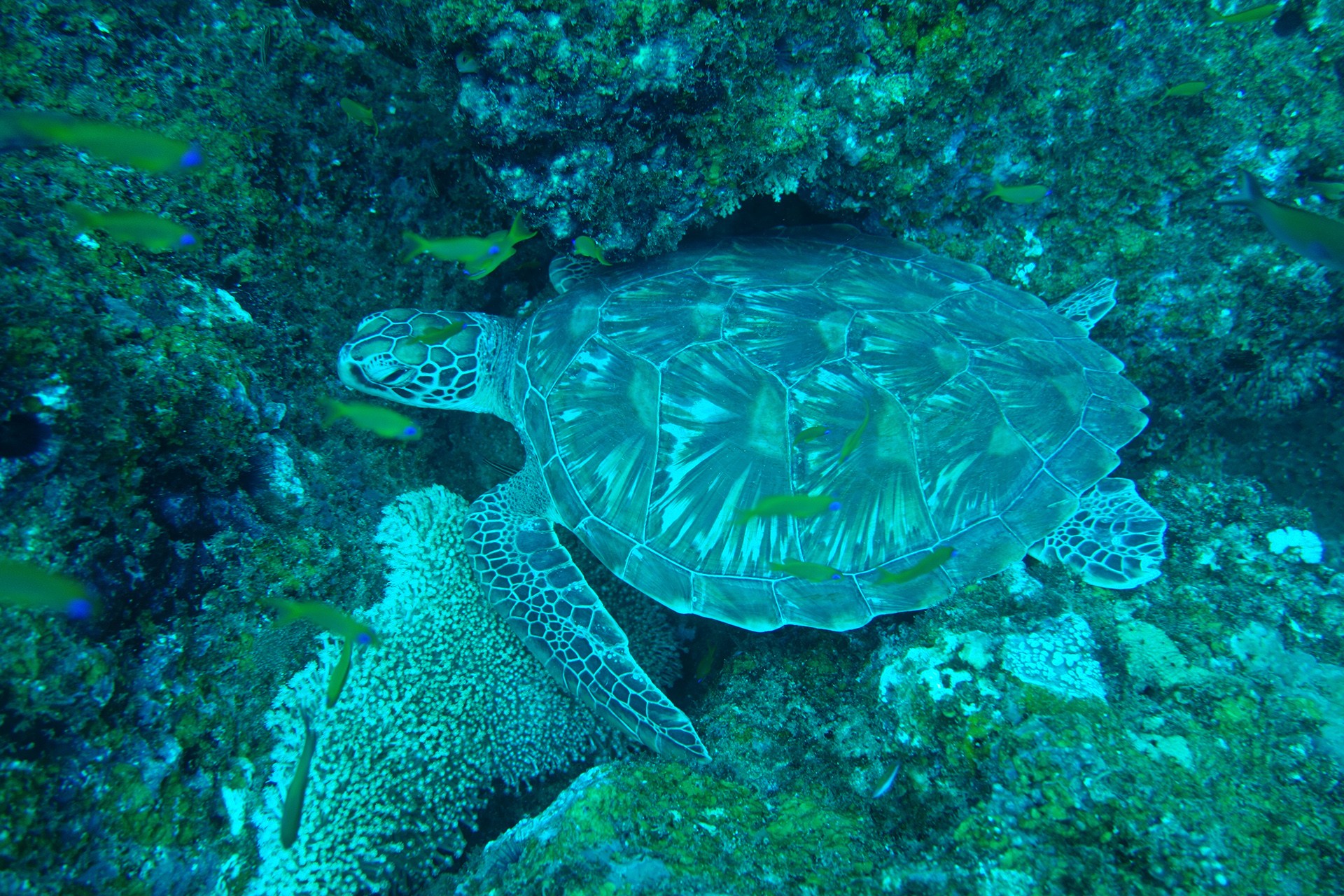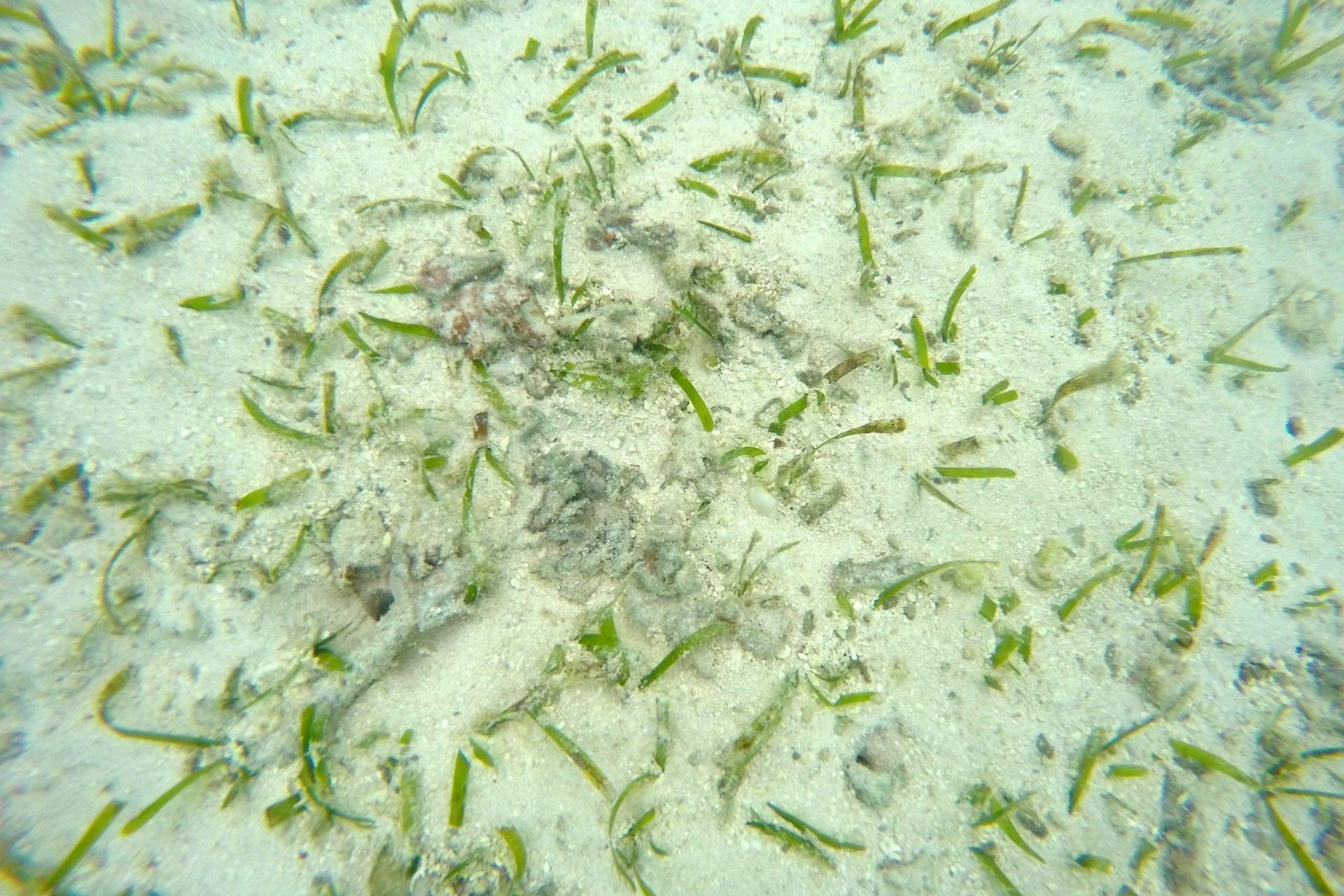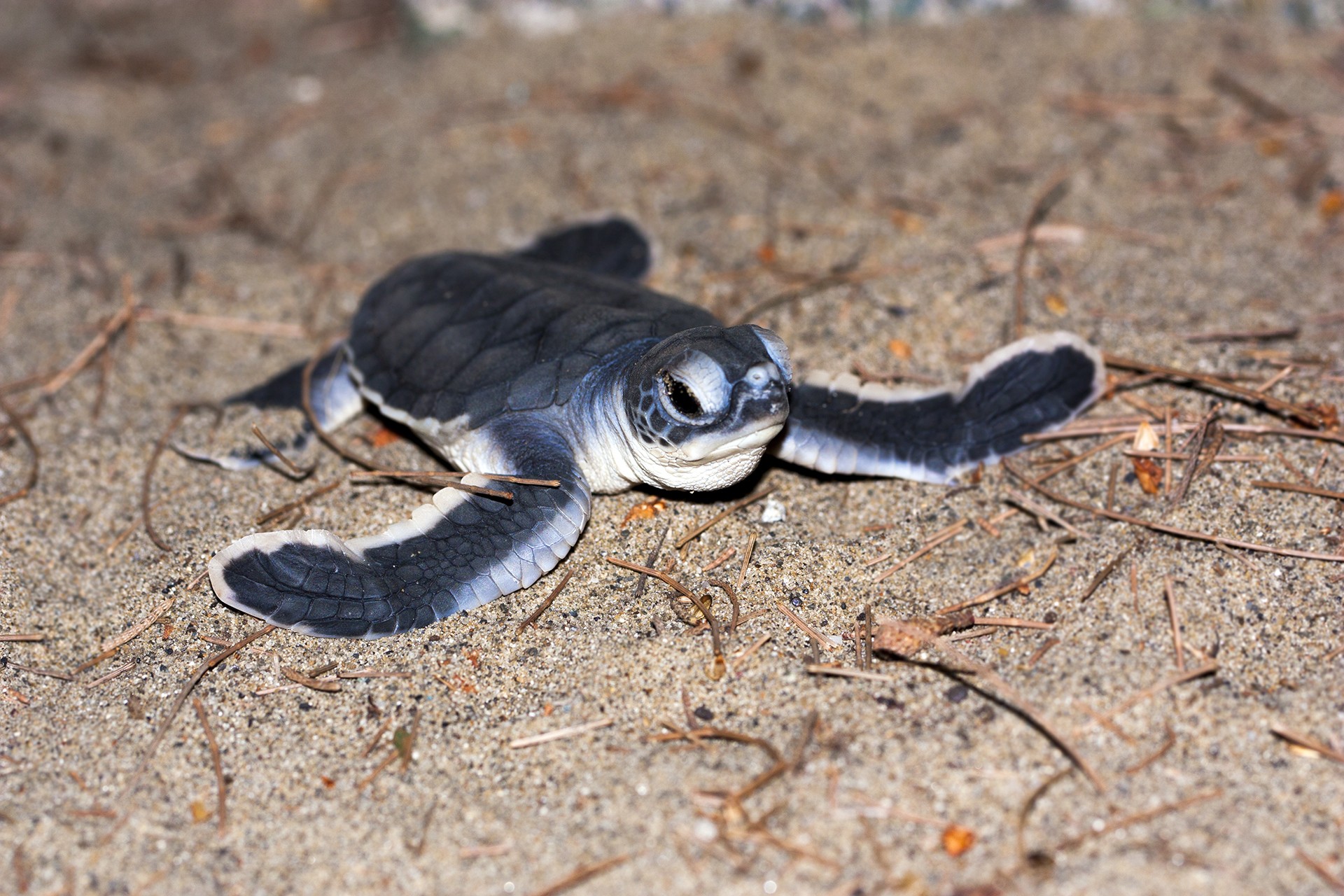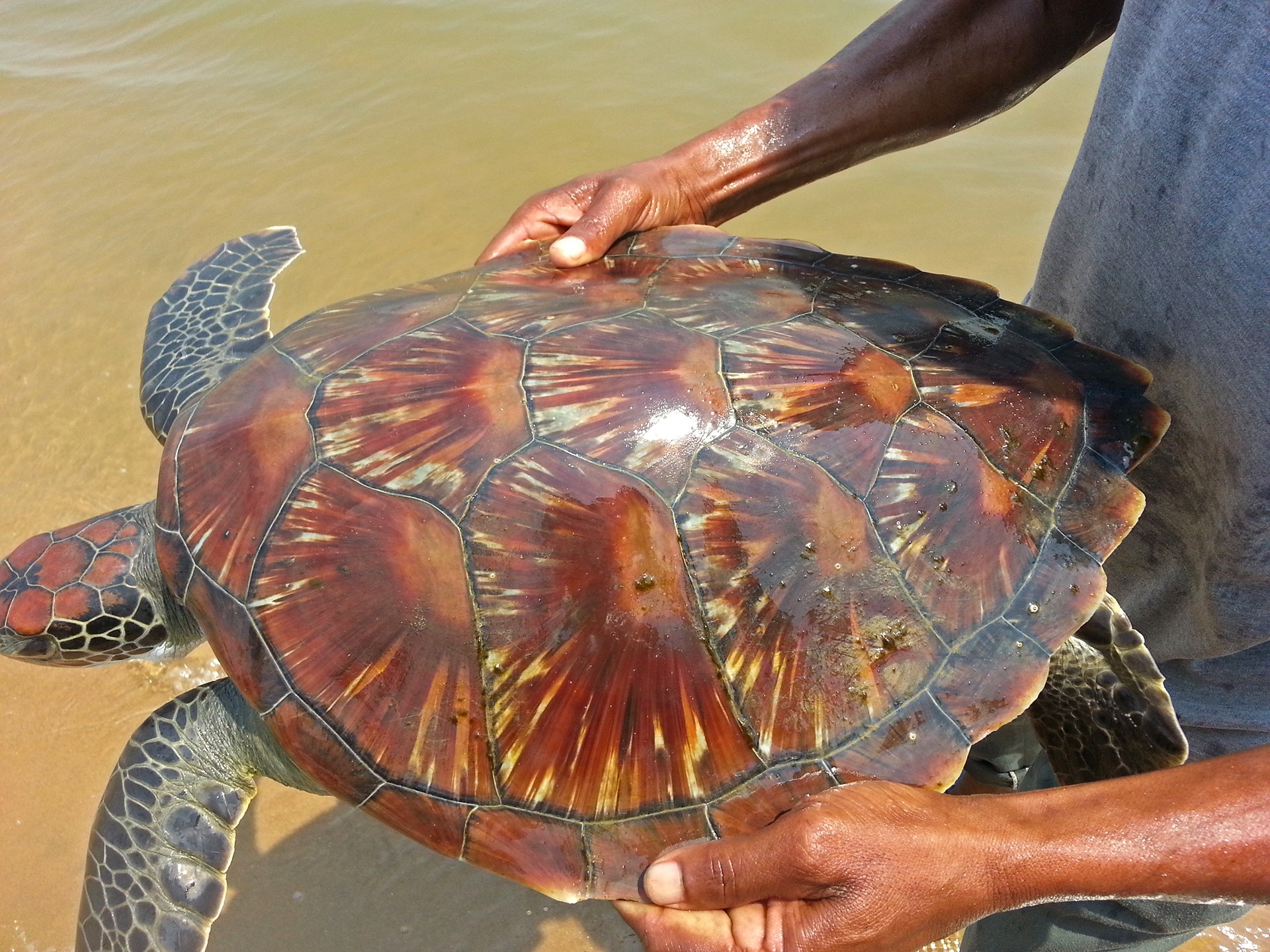The Lakshadweep Islands are one of the most idyllic locations in India. Located 200 km off the coast of Kerala, it takes only an hour by air or an overnight ship journey from Kochi. Most of these islands are only about 8 km in length, making it possible to walk along the entire periphery in just a couple of hours. Oriented in a North-South direction, these tiny coralline islands provide for picturesque views of the sun rising and setting upon the ocean. They are also home to small lagoons which provide refuge to corals and various other marine flora and fauna. Calm as swimming pools, the lagoons are ideal for snorkelling.
An aerial view of the Lakshadweep Islands resembles a canvas of the blue Arabian Sea spray painted in green and white. While the green can be credited to an abundance of coconut trees and a spattering of other tree species, the white is provided by its pristine sandy beaches. However, the trees are not the only green members on these islands, another major 'green' figure in Lakshadweep is the Green Sea Turtle.
The underwater herbivore
In India, Green Turtles are lesser known than their cousins the Olive Ridleys and the Leatherbacks, known for their wide distribution range and massive sizes respectively. Interestingly, Green Turtles are the second most common species of turtles in the world and also in the Indian subcontinent, where they nest mainly in Gujarat, Lakshadweep and the Andaman & Nicobar Islands. There have also been reports of rare sightings of juvenile Green Turtles in Maharashtra, Odisha and Andhra Pradesh.
Contrary to popular belief, Green Turtles are usually olive to brownish in colour. Their name is derived from the greenish colour of their fat and muscles. However, what makes these turtles unique is their diet; where they transform from omnivorous as juveniles to herbivorous as adults. While they eat anything from fish and jellyfish to shrimp and algae as juveniles, as adults, their preferred diet consists mainly of seagrass and algae.
Green Turtles’ favourite salad
Though technically not grass, seagrass is named so because of their long leaves that bear flower underwater. These plants play an important role in the underwater ecosystem as they help to reduce sand erosion. In addition to being the favourite diet of large herbivores like Manatees, Dugongs and Green Turtles, seagrass is also the preferred breeding ground for a large number of fish species.
The lagoons of Lakshadweep host up to seven types of seagrass and various species of algae (commonly called seaweed), which make these islands an ideal destination for Green Turtles. These lush lagoons are like buffet tables for the turtles who visit to replenish their energy sources after long migrations from their nesting sites or in preparation of long journeys to nesting sites. Such feeding sites are very crucial for sea turtles as they help young turtles grow; the more food is available, the faster a turtle grows and contributes to the population by reproducing.
Despite the wide range of food available to them, Green Turtles tend to be finicky eaters; they are particular about where they want to eat and what they want to eat. Studies from different parts of the world have shown that Green Turtles stick to their usual foraging sites and go back to the same grounds as and when required. In addition, some turtles are also picky about what they eat – if they like seagrass, they will avoid algae and vice versa. Then, there are the undecided ones that eat both seagrass and algae in equal proportions.
Going green
Lakshadweep Islands are more than just a feeding ground for Green Turtles, they are also the perfect site for nesting. Reports from the 1970s suggest that Green Turtles nest mostly on uninhabited islands but they are also known to nest on few inhabited islands in Lakshadweep. The locals believe that the turtles nest in the middle of every month and use cues such as moon phase and sky conditions to do so. However, in recent times, there has been an extensive construction of sea walls and erection of tetrapods along the coast to reduce sand erosion, creating a barrier for nesting turtles.
In addition to the threats to their nesting sites, Green Turtles are targeted for meat, oil and eggs for consumption globally. In Central America, there is a huge demand for specific Green Turtle parts for culinary specialities; the famous turtle soup is preferably made using Green Turtle meat.
In places such as the Cayman Islands, Green Turtles were farmed for consumption, these farms have now become popular tourist destinations. Green Turtles also face threats from natural predators and anthropogenic pressures such as fisheries by-catch and coastal development. In the past, this has caused a fluctuation in their numbers globally. However, recent years have seen Green Turtles doing well due to the better conservation strategies in place.
Back in the Lakshadweep Islands, Green Turtles were hunted for their eggs and oil derived from their fat. This oil was then used as waterproofing for fishing boats and the eggs were consumed as food resources were scarce. However, after protection being accrued to them under the Indian Wildlife Protection Act (1972), there has been a complete ban on their hunting. Hunting for turtle oil has also stopped in Lakshadweep with a shift in the material used for constructing boats (from wood to fibre); while egg consumption has reduced due to sufficient supply of food.
Green matters
However, Green Turtles have been in the eye of a storm lately. With an unprecedented increase in their numbers in Lakshadweep, they are drastically reducing seagrass present in the lagoons and indirectly, fish dependent on seagrass are also declining. This has caused strife between fishers and turtles where fishers are convinced that killing turtles would improve fish numbers.
Unfortunately, there is very little information about the behaviour of Green Turtles from Lakshadweep. To understand why the turtles do what they do, our study focuses on understanding different traits of these turtles such as movement within Lakshadweep and to neighbouring countries to gauge how far they travel. This information will shed light on the routine of Green Turtles which will help in their management. Along with their movement, we also study their diet and any changes in their dietary habits; which will help devise methods to restore seagrass meadows. Although overgrazing by turtles has become an issue in Lakshadweep, they help to keep the growth of seagrass and algae in check. These lawn mowers of the sea are crucial characters in the preservation of marine ecosystems.
They have constantly featured in human culture – from mythological depictions of a turtle carrying the Earth on its back to popular comic book characters like the 'Teenage Mutant Ninja Turtles’. Turtles have represented strength and resilience in their every form; whether it was surviving the dinosaur extinction millions of years ago or as the iconic Master Oogway in the animated movie series Kung Fu Panda. Perhaps it is because of this strength and resilience that they have been charged with the maintenance of the blues and the greens in our lagoons and oceans.





